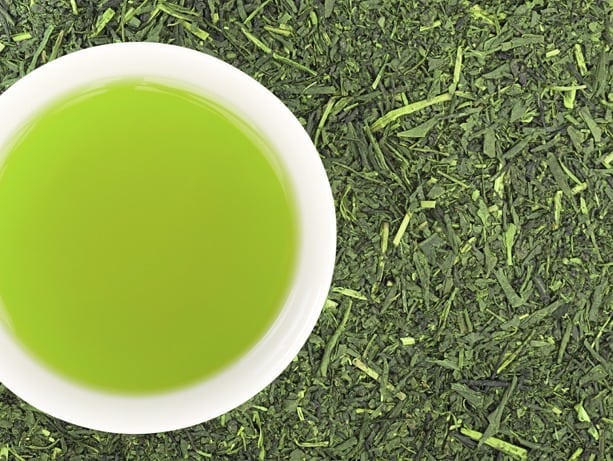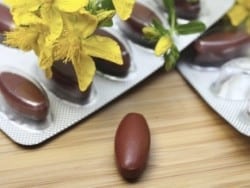
Herbal remedies are a multi-billion dollar industry. Sales of natural product supplements have nearly tripled in the past twenty years since passage of the Dietary Supplement Health and Education Act in 1994. Fueled in part by the assumption that “natural” means “safe,” as well as rising costs for conventional health care, many people turn to these supplements to both alleviate symptoms and illnesses as well as reap perceived health benefits, often without consulting their health care provider.
However, natural doesn’t always mean safe. In fact, little is known about how natural products may alter the therapeutic effects and safety of prescription and over-the-counter medications. “Viewed as a whole, these kinds of interactions can range from mild to severe or even life-threatening. So far, the data in the field has been highly variable in quality and/or relatively sparse, ” notes D. Craig Hopp, Ph.D., Program Director for the NIH’s National Center for Complementary and Integrative Health (NCCIH).

Studies in the late 1990s showed that St. John’s wort and grapefruit juice had dangerous interactions with a variety of medications. “For many years, pharmacists have had to deal with counseling patients on the safe and effective use of many herbal supplements without the benefit of reliable data from the literature and definitive guidance from authoritative sources,” commented Sean D. Sullivan, BScPharm, Ph.D., Professor and Dean of the UW School of Pharmacy.
A national team of researchers from the UW School of Pharmacy, the WSU College of Pharmacy, and the University of North Carolina at Greensboro (UNCG) Department of Chemistry and Biochemistry has partnered to study potential interactions between select natural products and commonly used medications. The cross-institutional collaborative team, known as the Natural Product Drug Interaction (NaPDI) Center, was funded by a $10M five-year grant from NCCIH.
The goal for the team is multi-fold: assess existing gaps in the scientific literature regarding the potential for natural products to significantly interact with common medications; investigate how natural products may interact with common medications; establish a set of best practices to address the unique challenges in the study of natural product drug interactions; and develop and maintain a database accessible through a public web portal. “Establishing research best practices in this arena is of significant public health importance,” said Gary M. Pollack, Ph.D., Professor and Dean of the WSU College of Pharmacy.

There are four sub-teams managing the project’s work, involving administrative, pharmacology, analytical, and informatics aspects. The administrative team, led by Co-Principal Investigator Dr. Danny Shen and Co-Investigator Dr. Jeannine McCune of the UW School of Pharmacy, will provide overall administrative coordination and support and will develop and disseminate best practices on natural product-drug interaction research.“
The pharmacology team, led by Co-Principal Investigator Dr. Mary Paine of the WSU College of Pharmacy, will identify and prioritize the 4-6 natural products to be studied, including green tea and cannabinoids (marijuana), seek to uncover the mechanisms of natural product-drug interactions, and design appropriate preclinical and clinical studies to address scientific gaps.
The analytical team, led by Dr. Nicholas Oberlies, a natural products chemist at UNCG, will acquire the materials for study and ensure their consistency and sufficient supply. “An improved understanding of these interactions requires natural products chemistry expertise, as unlike with drug products, natural products vary considerably in biochemical composition both between brands and batches of the same brand,” observed Patricia H. Reggio, Ph.D., Marie Foscue Rourk Professor and Head of UNCG’s Department of Chemistry and Biochemistry.
The informatics team, led by Dr. Isabelle Ragueneau-Majlessi of the UW School of Pharmacy, will ensure that the results and research best practices are clearly communicated by creating a data and information repository available to researchers, practitioners and the public through a website, app and blog. UW and WSU will collaborate on this aspect of the project—bringing together investigators from WSU’s Edward R. Murrow College of Communication and the seasoned team working with the UW’s Drug Interaction Database (DIDB), currently the largest manually-curated repository of preclinical and clinical drug-drug interactions.
“Interactions may occur between prescription drugs, over-the-counter drugs, dietary supplements, and even small molecules in food—making it a daunting challenge for scientists to identify all interactions that could be harmful,” wrote NCCIH Director Dr. Josephine Briggs. “The bottom line here is that there’s a lot we don’t know and much more study needed.”
The NaPDI Center plans to have initial results available within two years, with more to follow over the remainder of the project. The five-year, $10M NCCIH grant was funded as a large-scale research program of the National Institutes of Health under a cooperative agreement award (1U54AT008909-01).